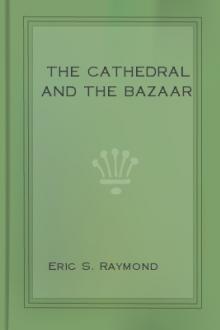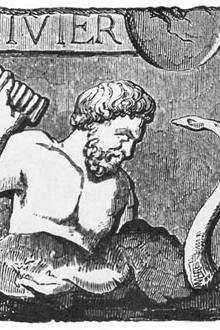Psychology, Robert S. Woodworth [android based ebook reader .txt] 📗

- Author: Robert S. Woodworth
- Performer: -
Book online «Psychology, Robert S. Woodworth [android based ebook reader .txt] 📗». Author Robert S. Woodworth
The stimulus, instead of being reduced, may be modified, and still arouse the same perception as before. A face appears in the baby's field of view, but away across the room so that it is a very small object, visually. The face approaches and gradually becomes a larger visual object, and the light and shadow upon it change from moment to moment, but it remains nearly enough the same to arouse essentially the same perception in the child. He comes to know the face at various distances and angles and under various lights.
{435}
Again, the child holds a block in his hands, and looks at it square on, so that it is really a rectangle in his field of view. He turns it slightly, and now it is no longer visually a rectangle, but an oblique parallelogram. But the change is not enough to abolish the first perception; he sees it as the same object as before. By dint of many such experiences, we see a book cover or a door as a rectangle, no matter at what angle we may view it, and we know a circle for a circle even though at most angles it is really an ellipse in the field of view. A large share of practised perceptions belong under the head of "response by analogy", [Footnote: See p. 406.] since they consist in making the same response to the present stimulus that has previously been made to a similar but not identical stimulus. If every modified stimulus gave a new and different perception, it would be a slow job getting acquainted with the world. A thing is never twice the same, as a collection of stimuli, and yet, within wide limits, it is always perceived as the same thing.
Corrected PerceptionResponse by analogy, however, often leads us astray, in making us perceive a new object as essentially the same as something already familiar. First impressions of a new object or acquaintance often need revision, because they do not work well. They do not work well because they are rough and ready, taking the object in the lump, with scant attention to details which may prove to be important. It is easy to follow the law of combination and respond to a whole collection of stimuli, but to break up the collection and isolate out of it a smaller collection to respond to--that is something we will not do unless forced to it. Isolation and discrimination are uphill work. When they occur, it is {436} because the rough and ready response has proved unsatisfactory,
Substitute response is the big factor in corrected perception, as substitute stimulus is in practised perception. When our first perception of an object gets us into difficulties, then we are forced to attend more closely and find something in the object that can serve as the stimulus to a better response. This is the process by which we isolate, analyze, discriminate.
Our old friend, the white rat, learned to enter a door only if it bore a yellow sign. [Footnote: See p. 304.] It was uphill work for him, hundreds of trials being required before the discriminating response was established; but he learned it finally. At the outset, a door was a door to the rat, and responded to as such, without regard to the sign. Whenever he entered a door without the sign, he got a shock, and scurried back; and before venturing again he looked all around, seeking, we may say, a stimulus to guide him; incidentally, he looked at the yellow disk, and this stimulus, though inconspicuous and feeble to a rat, finally got linked up with the entering response. The response of first finding and then following the sign had been substituted for the original response of simply entering.
In the same way the newly hatched chick, which at first pecks at all small objects, caterpillars included, learns to discriminate against caterpillars. In a practical sense, the chick, like the rat, learns to distinguish between stimuli that at first aroused the same response. It is in the same way that the human being is driven to discriminate and attend to details. He is brought to a halt by the poor results of his first rough and ready perception, scans the situation, isolates some detail and, finding response to this detail to bring satisfactory results, substitutes response to this {437} detail for his first undiscriminating response to the whole object.
The child at first treats gloves as alike, whether rights or lefts, but thus gets into trouble, and is driven to look at them more sharply till he perceives the special characteristics of rights and lefts. He could not describe the difference, to be sure, but he sees it well enough for his purposes. If you ask an older person to describe this difference, and rally him on his inability to do so, he is thus driven to lay them side by side and study out the difference still more precisely.
The average non-mechanical person, on acquiring an automobile, takes it as a gift of the gods, a big total thing, simply to sit in and go. He soon learns certain parts that he must deal with, but most of the works remain a mystery to him. Then something goes wrong, and he gets out to look. "What do you suppose this thing is here? I never noticed it before". Tire trouble teaches him about wheels, engine trouble leads him to know the engine, ignition trouble may lead him to notice certain wires and binding-posts that were too inconspicuous at first to attract his attention. A car becomes to him a thing with a hundred well-known parts, instead of just one big totality.
Blocked response, closer examination, new stimulus isolated that gives satisfactory response--such is, typically, the process of analytic perception.
Sensory Data Serving as Signs of Various Sorts of FactAmong facts perceived, we may list things and events, and their qualities and relations. Under "things" we here include persons and animals and everything that would ordinarily be called an "object". Under "events", we include movement, change and happenings of all sorts. Under {438} "qualities" we may include everything that can be discovered in a thing or event taken by itself, and under "relations" anything that can be discovered by comparing or contrasting two things or events. The "groups" that we have several times spoken of as being observed would here be included under "things"; but the strict logic of the whole classification is not a matter of importance, as the only object in view is to call attention to the great variety of facts that are perceived.
Now the question arises, by what signs or indications these various facts are perceived. Often, as we have seen, the fact is by no means fully presented to the senses, and often it is far from easy for the perceiver to tell on what signs the perception depends. He knows the fact, but how he knows it he cannot tell. A large part of the very extensive experimental investigation of perception has been concerned with this problem of ferreting out the signs on which the various perceptions are based, the precise stimuli to which the perceptions respond.
For example, we can examine objects by feeling of them with a stick held in the hand, and thus perceive their roughness or smoothness; but how do we sense these facts? It seems to us as if we felt them with the end of the stick, but that is absurd, since there are no sense organs in the stick. It must be that we perceive the roughness by means of sensations arising in the hand and arm, but to identify these sensations is a much harder task than to discover the objective fact of roughness.
Again, we distinguish the tones of two musical instruments by aid of their overtones, but elaborate experiments were required to prove this, since ordinarily we do not distinguish the overtones, and could simply say that the instruments sounded differently, and let it go at that.
Once more, consider our ability to perceive time intervals; {439} and to distinguish an interval of a second from one of a second and a quarter. How in the world can any one perceive time? Time is no force that could conceivably act as a stimulus to a sense organ. It must be some change or process that is the stimulus and that serves as the indication of duration. Most likely, it is some muscular or internal bodily change, but none of the more precise suggestions that have been offered square with all the facts. It cannot be the movements of breathing that give us our perception of time, for we can hold our breath and still distinguish one short interval from another. It cannot be the heart beat, for we can beat time in a rhythm that cuts across the rate of the heart beat. When a singer is accompanying himself on the piano, keeping good time in spite of the fact that the notes are uneven in length, and meanwhile using his feet on the pedals, what has he got left to beat time with? No one has located the stimulus to which accurate time perception responds, though, in a general way, we are pretty sure that change of one sort or another is the datum. With longer intervals, from a minute to several hours, the sign of duration is probably the amount happening in the interval, or else such progressive bodily changes as hunger and fatigue.
The Perception of SpaceStimuli for the perception of location are provided by all the senses. We perceive a taste as in the mouth, thirst as in the throat, hunger pangs as in the stomach. To a familiar odor we may respond by knowing the odorous substance to be close at hand. To stimulation of the semi-circular canals we respond by knowing the direction in which we are being turned.
We respond to sounds by knowing the direction from which they come, and the distance from which they come; {440} but it must be confessed that we are liable to gross errors here. To perceive the distance of the sounding body we have to be familiar with the sound at various distances, and our perception of distance is based on this knowledge. As to the direction of sound, experiment has proved that we do little more than distinguish between right and left; we are all at sea in attempting to distinguish front from back or up from down. Apparently the only datum we have to go by is the different stimulation given the two ears according as the sound comes from the right or left.
The remaining senses, the cutaneous, the kinesthetic and the visual, afford much fuller data for the perception of spatial facts. Movements of the limbs are perceived quite accurately as to direction and extent.
A cutaneous stimulus is located with fair exactness, though much less exactly on such regions as the back than on the hands or lips. If you were asked how you distinguished one point from another on the back of the hand, you could only answer that they felt different; and if you were further asked whether a pencil point applied to the two points of the skin





Comments (0)